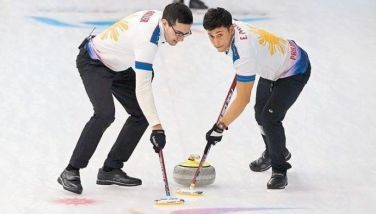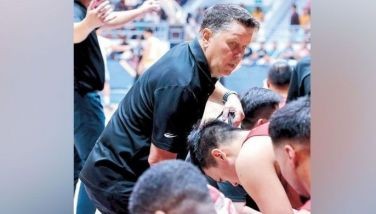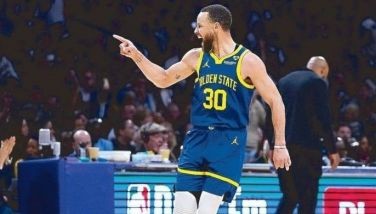The 10,000-hour rule
Last week’s column, “Nature vs. Nurture: Athletes’ Genes†had us jumping into the age-old debate whether vastly superior athletic performance is caused by genetics (genetic freaks, as they are called) or rendered by simply normal people who overcame their biological limits through sheer force of will and obsessive training. This question was raised by David Epstein, senior writer of Sports Illustrated (SI), in his book, “The Sports Gene: Inside the Science of Extraordinary Athletic Performance†which we introduced in last week’s column.
To continue last week’s column, Epstein says (that the idea of constant and almost lifelong practice as the way to excellence), “started with musicians.â€
1933. Three psychologists did a study and turned to the Music Academy of West Berlin, which had a global reputation for producing world-class violinists. Epstein states that the academy professors helped the psychologists identify ten of the “best†violin students, those who could become international soloists; ten students who were “good†and could make a living in a symphony orchestra; and then lesser students they categorized as “music teachers,†because that would be their likely career path.
Detailed interviews with all 30 academy students and “certain similarities†emerged. All of the musicians from all three groups had started taking systematic lessons at around eight years old, and all had decided to become musicians around 15. And, despite their skill differences, “the violinists from all three groups dedicated a whopping 50.6 hours each week to their music skills, whether taking music theory classes, listening to music, or practicing and performing.â€
It did not take time for a major difference to surface. The violinists in the top two groups spent practicing on their own: 24.3 hours each week, compared with 9.3 for the bottom group. The musicians, according to Epstein, rated solitary practice as the most important aspect of their training, “albeit a much more taxing one than activities like group practice or playing for fun. Everything in the lives of the violinists in the top two groups seemed to orbit around training and recovery from training. They slept 60 hours each week, compared with 54.6 for the bottom group.†But, as Epstein said, even the hours spent practicing alone didn’t differentiate the top two groups.
So, the psychologists asked the violinists to estimate hours of practice since the day they began playing. According to Epstein, the top violinists begun ramping up their practice hours more quickly after they first took up the instrument. By age 12, the best violinists had a head start of about 1,000 hours on the future teachers. And even though the top two groups were spending identical amounts of time on their craft at the academy, the future international soloists had accumulated, on average, 7,410 hours of solitary practice by age 18, compared with 5,301 hours for the “good†group, and 3,420 hours for the future teachers.
Hence, the psychologists wrote, “there is complete correspondence between the skill level of the groups and their average accumulation of practice time alone with the violin.â€
And here’s the most important conclusion: the psychologists concluded that what might have been construed as innate musical talent was actually years of accumulated practice.
Not content with the rigor of the study on violinists, the psychologists found, in a comparative study, that expert pianists had, on average, accumulated a similar number of practice hours as the top violinists, as if there were some universal rule of expertise. Epstein states that the researchers used the weekly practice estimates to suggest that expert musicians, regardless of instrument, accumulate 10,000 hours of practice by age 20 and that skilled performers engage in greater quantities of “deliberate practice,†the kind of effortful exercises that strain the capacity of the trainee. The kind of practice that is often done in solitude.
Epsein refers to the paper, “The Role of Deliberate Practice in the Acquisition of Expert Performance†in which the authors (headed by lead author, psychologist K. Anders Ericsson) suggest that accumulated hours of practice were masquerading as innate talent in both music and sports.
Ericsson came to be viewed as the father of the “10,000 hours†to expertise rule or the “deliberate practice framework,†as is often known among those who study skill acquisition.
Epstein states that in some cases, popular writers describing Ericsson’s work have allowed for individual genetic differences in addition to differences born of practice, while others have taken a rigid view of the 10,000-hours rule as absolute, with no room for genetic gifts. Epstein adds that during the writing of his book, he saw the 10,000 hours referenced as the recipe for success in areas as disparate as an interview given by a US Olympic committee scientist and the annual letter from a hedge fund to its investors explaining the fund’s tenets of success.
He even became acquainted with a golfer who is putting the rule to a very personal test. Next week, we narrate the story of 30-year old Don McLaughlin, who quit his job as a commercial photographer to become a professional golfer.
- Latest
- Trending



























